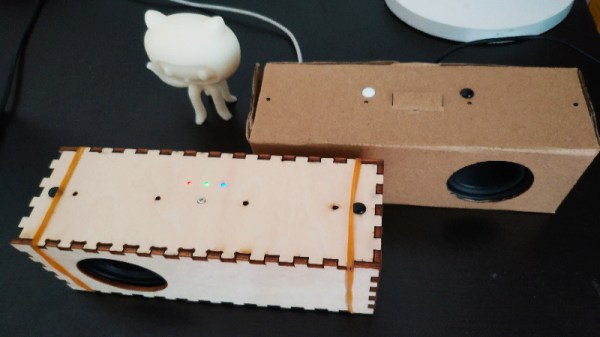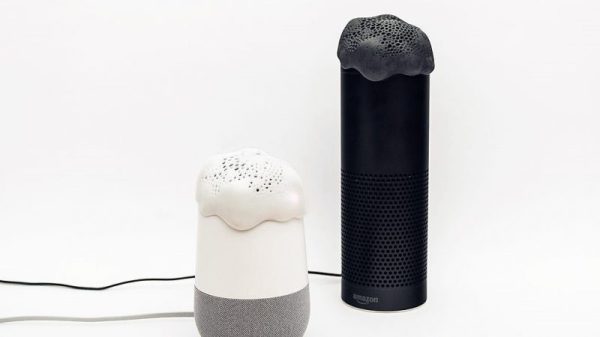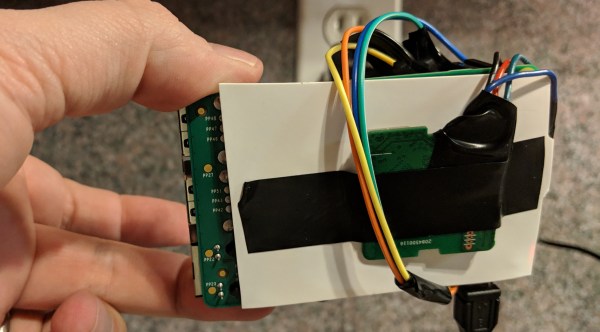How Easy is It to Hack a Google Home

Smart speakers have always posed a risk to privacy and security — that's just the price we pay for getting instant answers to life's urgent and not-so-urgent questions the moment they arise. But it seems that many owners of the 76 million or so smart speakers on the active install list have yet to wake up to the reality that this particular trick of technology requires a microphone that's always listening. Always. Listening.
With so much of the world's workforce now working from home due to the global SARS-CoV-2 pandemic, smart speakers have suddenly become a big risk for business, too — especially those where confidential conversations are as common and crucial as coffee.
Imagine the legions of lawyers out there, suddenly thrust from behind their solid-wood doors and forced to set up ramshackle sub rosa sanctuaries in their homes to discuss private matters with their equally out-of-sorts clients. How many of them don't realize that their smart speaker bristles with invisible thorns, and is even vulnerable to threats outside the house? Given the recent study showing that smart speakers can and do activate accidentally up to 19 times per day, the prevalence of the consumer-constructed surveillance state looms like a huge crisis of confidentiality.
So what are the best practices of confidential work in earshot of these audio-triggered gadgets?
Continue reading "Stay Smarter Than Your Smart Speaker"

Smart speakers have proliferated since their initial launch earlier this decade. The devices combine voice recognition and assistant functionality with a foreboding sense that paying corporations for the privilege of having your conversations eavesdropped upon could come back to bite one day. For this reason, [Yihui] is attempting to build an open-source smart speaker from scratch.
The initial prototype uses a Raspberry Pi 3B and a ReSpeaker microphone array. In order to try and bring costs down, development plans include replacing these components with a custom microphone array PCB and a NanoPi board, then implementing basic touch controls to help interface with the device.
There's already been great progress, with the build showing off some nifty features. Particularly impressive is the ability to send WiFi settings to the device using sound, along with the implementation of both online and offline speech recognition capabilities. This is useful if your internet goes down but you still want your digital pal to turn out the lights at bed time.
It's not the first time we've seen a privacy-focused virtual assistant, and we hope it's not the last. Video after the break.
Continue reading "Building A Smart Speaker From Scratch"

The Google Home Mini can be a useful home assistant device. It can set reminders, tell you the weather, and even play you music. [Brian] had a few lying around, and decided he wanted to hook one up to a beefier set of speakers. Thus, he installed a headphone jack into the Google Home Mini.
The quick and dirty approach to such a task is to solder a jack to the speaker connections. However, this is an amplified signal, rather than a line level signal suitable for feeding to an amplifier. It's also mono only. The Google Home Mini uses the TAS5720L mono digital amplifier chip, and some investigation with a logic analyzer and a datasheet allowed [Brian] to figure out the format of the I2C digital audio signal.
With this knowledge in hand, [Brian] hacked in a PCM5102A digital amplifier chip to the Google Home Mini. It can accept audio data in the same format as the TAS5720L, and is readily available on eBay for use with the Raspberry Pi and other maker platforms. With a 3D printed baseplate and some careful soldering, [Brian] was able to integrate the stereo amplifier and a headphone jack neatly into the Google Home.
Unfortunately, the audio output is only two mono channels rather than true stereo, as the device outputs the same data on both left and right channels in the I2C data. Regardless, the hack works, and [Brian] now has a high-quality voice assistant that he can hook up to a decent pair of speakers.

Cruising through the children's hands-on activity zone at Maker Faire Bay Area, we see kids building a cardboard enclosure for the Chatterbox smart speaker kit. It would be tempting to dismiss the little smiling box as "just for kids" but doing so would overlook something more interesting: an alternative to data-mining corporations who dominate the smart speaker market. People are rightly concerned about Amazon Echo and Google Home, always-listening devices for online retail sending data back to their corporate data centers. In order to be appropriate for children, Chatterbox is none of those things. It only listens when a button is pressed, and its online model is designed to support the mission of CCFC (Campaign for a Commercial-Free Childhood.)
Getting started with a Chatterbox is much like other products designed to encourage young makers. The hardware — Raspberry Pi, custom HAT, speaker and button inside a cardboard enclosure — is conceptually similar to a Google AIY Voice kit but paired with an entirely different software experience. Instead of signing in to a Google developer account, children create their own voice interaction behavior with a block-based programming environment resembling MIT Scratch. Moving online, Chatterbox interactions draw upon resources of similarly privacy-minded entities like DuckDuckGo web search. Voice interaction foundation is built upon a fork of Mycroft with changes focused on education and child-friendliness. If a Chatterbox is unsure whether a query was for "Moana" or "Marijuana", it will decide in favor of the Disney movie.
 Many of these privacy-conscious pieces are open source or freely available, but Chatterbox pulls them all together into a single package that's an appealing alternative to the big brand options. Based on conversations during Hackaday's Maker Faire meetup, there's a market beyond parents of young children. From technically aware adults who lack web API coding skills, to senior citizens unaware of dark corners of the web. Chatterbox Kickstarter campaign has a few more weeks to run but has already reached funding goals. We look forward to having a privacy-minded option in voice assistants.
Many of these privacy-conscious pieces are open source or freely available, but Chatterbox pulls them all together into a single package that's an appealing alternative to the big brand options. Based on conversations during Hackaday's Maker Faire meetup, there's a market beyond parents of young children. From technically aware adults who lack web API coding skills, to senior citizens unaware of dark corners of the web. Chatterbox Kickstarter campaign has a few more weeks to run but has already reached funding goals. We look forward to having a privacy-minded option in voice assistants.

To quote the greatest philosopher of the 20th century: "The future ain't what it used to be." Take personal assistants such as Amazon Echo and Google Home. When first predicted by sci-fi writers, the idea of instant access to the sum total of human knowledge with a few utterances seemed like a no-brainer; who wouldn't want that? But now that such things are a reality, having something listening to you all the time and potentially reporting everything it hears back to some faceless corporate monolith is unnerving, to say the least.
There's a fix for that, though, with this cone of silence for your smart speaker. Dubbed "Project Alias" by [BjørnKarmann], the device consists of a Raspberry Pi with a couple of microphones and speakers inside a 3D-printed case. The Pi is programmed to emit white noise from its speakers directly into the microphones of the Echo or Home over which it sits, masking out the sounds in the room while simultaneously listening for a hot-word. It then mutes the white noise, plays a clip of either "Hey Google" or "Alexa" to wake the device up, and then business proceeds as usual. The bonus here is that the hot-word is customizable, so that in addition to winning back a measure of privacy, all the [Alexas] in your life can get their names back too. The video below shows people interacting with devices named [Doris], [Marvin], [Petey], and for some reason, [Milkshake].
We really like this idea, and the fact that no modifications are needed to the smart speaker is pretty slick, as is the fact that with a few simple changes to the code and the print files it can be used with any smart speaker. And some degree of privacy from the AI that we know is always listening through these things is no small comfort either.
Continue reading "Win Back Some Privacy With A Cone Of Silence For Your Smart Speaker"

It took a long time, but it's 2019, and we're starting to get used to the concept of talking to a computer to make it control things around the house. It's not quite as cool as it seemed when we saw it in films way back when, but that's just real life. The problem is, there's a multitude of different systems and standards and they don't all necessarily work together. In [Blake]'s case, the problem is that Woods brand hardware only works with Amazon Alexa, which simply won't do.
[Blake] went through the hassle of getting an Amazon Alexa compatible WiFi outlet to work with Google Assistant. It's a bit of a roundabout way of doing things, but it works. A TP-Link HS-105 WiFi plug is used, which can be controlled through Google Assistant voice commands. The part consists of two PCBs – a control board that speaks WiFi, and a switching board with relays. [Blake] used the control board and hooked it up to a Raspberry Pi. When switched on by a command from Google, the HS-105 sets a pin high, which is detected by the Raspberry Pi. The Raspberry Pi then runs a software implementation of the KAB protocol used by the Woods hardware, triggering it when it receives the signal from the TP-Link hardware.
If we understand correctly, [Blake] had to go to this trouble in order to make his special outdoor-rated outlets work with his Google Home setup. Hopefully interoperability improves in years to come, but we won't hold our breath.
We've seen some pretty convoluted projects in this space before, often using IFTTT — like this ESP8266 voice controlled tank.

One of the great things about hacking together projects these days is how many powerful subsystems are readily available to reuse. [Sanjeet] took full advantage of a whole slate of reusable pieces when he built R3-14 — a personal assistant robot that you can see in action in the video below.
Many people started out in electronics building something simple like a crystal radio or an LED cube. But how far could you get if your projects had to begin at the most basic level, by drawing out copper wire, fabricating coils, capacitors, semiconductor devices, and batteries? Even if you know how to do all those things, it would take a lot of time, so there is no shame in using off-the-shelf components. By the same token, [Sanjeet] uses Google Assistant, 433 MHz RF transmitters, and a Raspberry Pi as components in this build. Along the way, he also contributed some reusable pieces himself, including an LED library for the PI and a library to allow Siri to control a Raspberry Pi.
Continue reading "R3-14, The Personal Assistant Two Years In The Making"
Source: https://hackaday.com/tag/google-home/
0 Response to "How Easy is It to Hack a Google Home"
إرسال تعليق